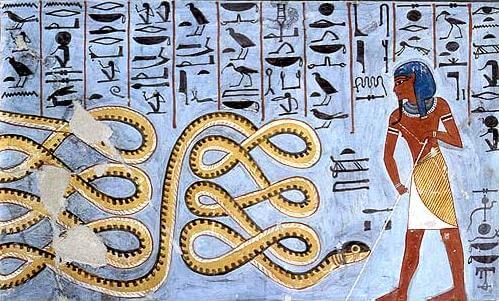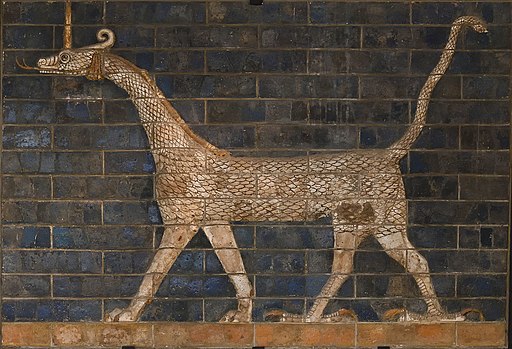When you think of dragons, wings and flight pop to mind, don’t they? The image of a winged lizard soaring across the heavens has been deeply integrated into modern culture, especially with the birth of the fantasy fiction genre. And it’s easy to forget or struggle to recall dragons without wings or those that don’t fly at all.
And that’s what this week’s blog post is about. The flight and plight of dragons. But before we get into it, grab a sheet of paper and a pen, and write down the dragons you know of who either don’t have wings or who can’t fly. Or tweet it to us. Just quickly. A memory test for this little experiment.
Done? Great!
You probably jotted down infamous dragons like Jormungandr or the Lernaean hydra. They’re pretty iconic in Western cultures, right? Both of those don’t possess wings, so logically, they’re not capable of flight. Seems a simple enough deduction. But, as you know, dragons are anything but simple. Who are we to lump them into our constrained perceptions of logic and physics?
So let’s start at the beginning.
Ancient History

Back before science all but eliminated the thought of dragons wandering our planes, the mighty creatures roamed and ruled. Some benevolent, others not so much. But most were like forces of nature: neither one or the other. They were generally serpentine in form, sometimes with legs but not always. Wings? That was practically unheard of. Snakes and lizards didn’t have wings. And dragons, well, dragons were beings of power, mystery, and magic. Who needs wings when you have those?
For instance, in the 22nd century B.C, one of the earliest dragons was mentioned in the mythology of Ancient Egypt as a god called Apep. He was a serpent deity of chaos, quite like Vritra from 15th century Hindu mythology.
Neither deity possessed wings, nor have we found references to them having the ability to fly or glide such as the Rainbow Serpent of Aboriginal mythology we discussed in Episode 2. Unlike our serpentine rainbow friend, Apep and Vritra sported legs.

Which leads us to the mušḫuššu from Mesopotamian mythology, dating back to the 6th century B.C. Like Apep and Vritra, the mušḫuššu were serpent-like dragons with limbs. They, too, were wingless dragons and unable to fly. But not all early dragons were wingless. Indeed, there were winged dragons living in the time of the wingless ones–even within the same mythology.
To Fly or Not to Fly
So why wings? Well, why not? They’re pretty handy to have. Though, if you had the power of a dragon, chances are wings would be redundant or ornamentary. For instance, within Japanese, Korean, and Chinese mythology, dragons flew because of magic or because they were lighter than air. And in some mythologies, the ability to fly was purely because of the dragon’s divine nature and being unopposed by the constraints of mortals.
There are instances, however, where wings weren’t just redundant but might have been an impediment. Terrestrial and marine dragons for example. A mountain dragon wouldn’t take to the sky any sooner than a river dragon. Their domains weren’t there.
But, Mythsters, what’s the point of wings at all when magic, physics, and divinity were at play? Well, can anyone know for sure? I have some theories. Take a look at the animals around you. Birds and some mantids use their wings for purposes other than flying. Courtship, warding off a predator, or chasing away a rival. Wings in dragons could potentially fulfill those roles as well. Or even perhaps serve a purpose much like the ears on an elephant: body temperature regulation.
Or perhaps wings had another purpose. A psychological purpose.
I don’t know about you, but if I saw a 20 metre long predator in the sky with a wingspan double that, I’d likely shit myself. It’s a simple thing to test, in a way. Imagine a magnificent dragon soaring the heavens above you, great wings held still as it glides. Now take those wings away. A different effect, is it not?
Perhaps the presence of wings or the lack thereof are a physical attribute to symbolize a dragon’s nature. I point to the dragons of Japan, Korea, and China again for this. Most dragons were benevolent or, at least, non-malevolent. Serpentine bodies without wings seem to reflect that. And, for instance, in Medieval Europe, dragons were malevolent and those wings reflected that personality trait as well.
What you think, Mythsters? Why did dragons have or not have wings? Let us know on Twitter, a comment here, or even email us. We’ll let you ponder on this for now, though.
Until next time, later, Mythsters!
Sources
- Egyptian Myths
- Kunoichi
- Rigveda
- Hindu Theology
- Furious Snake
- Transtigridian Snake Gods

Anike Kirsten
Anike lives in the dead centre of South africa, an area called the Bo-Karoo, where she looks for spiders for fun. She is a writer, illustrator, mother, wife, and nerd-geek hybrid. Anike enjoys all forms of science fiction, fantasy, and horror. Well, almost all forms. Not romance. And loves stories from her home country. She is also one of the Mythster voices who may or may not go off the rails about something or another.

Be First to Comment